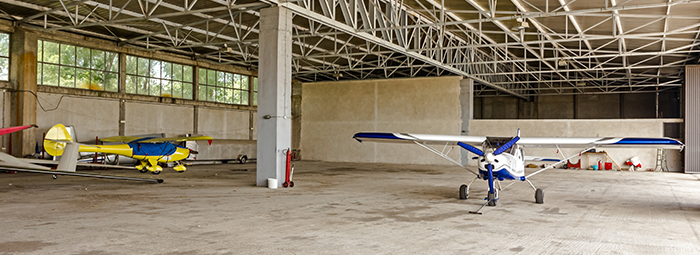
©2020 This excerpt taken from the article of the same name which appeared in ASHRAE Journal, vol. 62, no. 4, April 2020.
About the Authors
Christian Taber, BEMP, HBDP, Member ASHRAE; Brandon A. Steele, Student Member ASHRAE
Thermal air stratification results when heated air rises due to its having a lower density relative to ambient air, which results in a thermal gradient from floor to ceiling. The heated air typically stagnates at the ceiling of large facilities due to a lack of air circulation. Air stratification presents an important consideration in facility energy savings for buildings with tall ceilings; elevated air temperature at the ceiling level increases the rate of heat loss through the building envelope. A substantial opportunity to reduce annual heating costs for facilities is available by reducing floor-to-ceiling stratification.
Airports present a tremendous air destratification energy savings opportunity because many of the buildings have large, open spaces with high ceilings. Heating airport hangars to meet comfort temperature requirements often consumes large amounts of energy and produces an excessive amount of emissions. Like many other areas of industry, airports are now under pressure to use energy-efficient systems and comply with increasingly stringent regulations while still providing occupant thermal comfort, all in an effort to reduce operating costs and reduce carbon footprint.
High volume, low speed (HVLS) fans are a prominent and practical means for reducing the floor-to-ceiling temperature gradient in large spaces. Large-diameter, HVLS fans are operated in the downward direction at low speeds during winter to mix warm air at the ceiling with cooler air at the floor, all while not creating the sensation of unwanted cooling across an occupant’s skin. Fans can be operated in the upward direction to destratify air, but this typically requires higher operating speeds and costs, as the fan has to push the heated air along the ceiling and down a vertical surface to reach the thermostat level. The fans lower the average space temperature by minimizing excess heat at the ceiling, which reduces HVAC system use. The study presented in this article seeks to quantify the effects on energy cost and consumption from use of an HVLS fan for air destratification in an airport hangar.
Methods
The test building is 15,000 ft2 (1,400 m2), has a peak ceiling height of 40 ft (12 m) and height of 20 ft (6 m) at the eaves and is located in Frankfort, Ky. A 20 ft (6 m) diameter HVLS fan was installed in the center of the facility with a blade height of approximately 27 ft (8 m) from the floor. The primary goal of this study is to measure and evaluate the energy and cost impacts associated with using an HVLS fan for air destratification during the cold weather season.
Temperature Loggers
Air temperatures were monitored using temperature and humidity loggers. Three loggers were placed along the back wall of the facility at 5 ft, 15 ft and 35 ft (5 m, 4.6 m and 10.7 m) above the floor. An additional logger was placed in a sheltered location outside the facility to collect outdoor air temperature. Loggers were set to collect a data point once every 5 minutes.
Read the Full Article
ASHRAE Members have free access to the full-text PDF of this article as well as the complete ASHRAE Journal archives back to 1997 in the Free Member Access Area.
Non-members can purchase features from the ASHRAE Bookstore. Or, Join ASHRAE!
Return to Featured Article Excerpts
Return to ASHRAE Journal Featured Article Excerpts